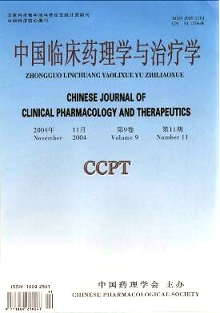Effects of ligustrazini and L-arginine on hepatocellular energy metabolism in rabbits with reperfusion injury after ischemia
WANG Wan-tie, JIN Ke-Ke, WANG Wei, CHEN Xi-Wen, XU Zheng-Jie, XU Yai-Xiao, PAN Xue-Rong, XIE Ke-Jian
2004, 9(11):
1264-1267.
 Asbtract
(
160 )
Asbtract
(
160 )
 PDF (404KB)
(
192
)
References |
Related Articles |
Metrics
PDF (404KB)
(
192
)
References |
Related Articles |
Metrics
AIM: To study the effects of ligustrazini (LGT) and L-arginine (L-Arg) on hepatocellular energy metabolism in the rabbits with reperfusion injury after he-patic ischemia and its mechanisms. METHODS: 40 rab-bits were randomly divided into 4 groups (n=10 in each), hepatic ischemia-reperfusion (HIR) group, HIR + LGT group (B), HIR + L-Arg group (C) and HIR + LGT + L-Arg group (D). The contents of adenosine triphosphate (ATP), adenosine diphosphate (ADP), ad-enosine monophosphate (AMP),total adenylic acid num-ber (TAN), energy charge (EC), malondialdehyde (MDA), superoxide dismutase (SOD), nitric oxide prod-ucts (N02-/N03-), thromboxane B2 (TXB2), and 6-ke-to-prostaglandin F1α (6-keto-PGF1α) ratio in the liver tis-sue were measured at 45 minutes after reperfusion. RESULTS: The contents of ATP, NO, 6-keto-PGF1α and SOD activity of the liver tissue in B, C, and D groups were higher than those in HIR group (P < 0.05 or P < 0.01), the contents of MDA, TXB2 and TXB2/6-keto-PGF1α ratio of the liver tissue in B,C, and D groups were lower than those in HIR group (P<0.05 or P<0.01). CONCLUSION: The combination usage of LGT and L-Arg can improve the hepatocellular energy metabolism in the reperfusion injury after liver ischemia by decreasing oxygen free radical level, raising NO level and correcting TKA2/PGI2 imbalance.


